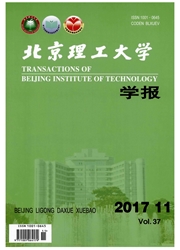

 中文摘要:
中文摘要:
通过阳离子开环聚合制备了一系列不同比例的3-丙烯酰氧甲基-3’-甲基氧杂环丁烷(AMO)和3-[2-甲氧基(三乙氧基)]甲基-3’-甲基氧杂环丁烷(MEMO)的共聚物PAM.通过^1H-NMR谱图计算发现:AMO结构单元在共聚物中所占的比例均低于根据投料比计算的理论值.把这些共聚物和LiTFSI复配后通过BPO引发自由基聚合可交联成膜,利用交流阻抗法测试了其离子电导率,其中MEMO含量最高的PAM33电导率最高,30℃时达1.44×10^-5s/cm,80℃时达1.25×10^-4S/cm.DSC测试结果显示,共聚物中MEMO的结构单元含量越多,其丁。越低。越有利于导电.
 英文摘要:
英文摘要:
The copolymer PAM, derived from two oxetane monomers 3-acryloyloxymethyl-3'- methyloxetane (AMO) and 3- [ 2-methoxy (ethylenoxy) ] methyl-3'-methyloxetane (MEMO), was synthesized through cationic ring-opening polymerization. The 1H-NMR results revealed that the enchained ratio of AMO in the copolymers was far less than the feed ratio as calculated. The copolymers were crosslinked through the radical polymerization of the vinyl groups in AMO after doped with the lithium salt LiTFSI to fabricate tough polymer electrolyte films. The ionic conductivity was measured at varying content of AMO and different concentration of LiTFSI by AC impedance, of which PAM33 showed a maximum ion conductivity of 1.44 × 10^-5 S/cm at 30 ℃and 1.25 × 10^-4 S/ cm at 80℃ at the ratio of n (O) : n (Li) = 20. DSC results indicated that Tg decreased with the increase in the proportion of AMO in the copolymer. It was well consistent with the ion conductivity results.
 同期刊论文项目
同期刊论文项目
 同项目期刊论文
同项目期刊论文
 期刊信息
期刊信息
